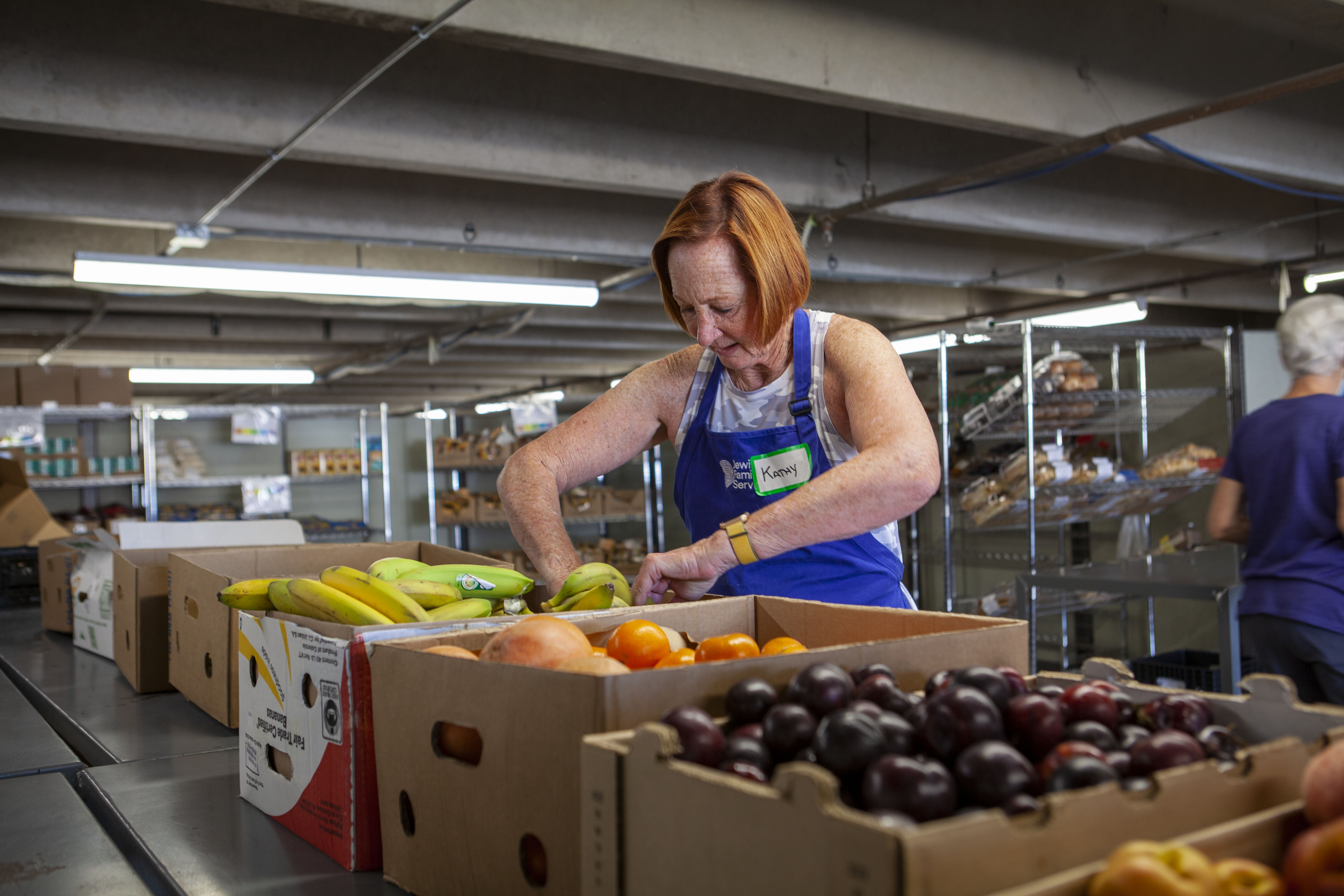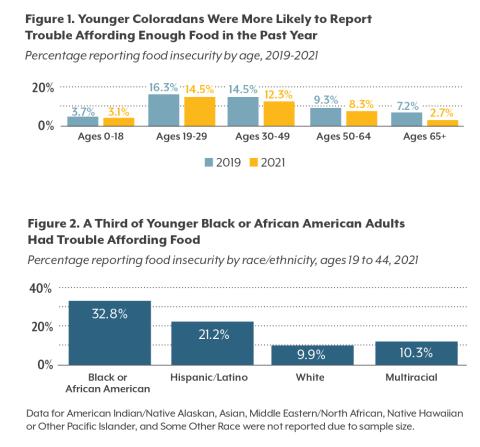According to the 2021 Colorado Health Access Survey (CHAS), Coloradans in every county report not getting enough to eat. In most southern Colorado counties, more than one in 10 people are food insecure (See Map 1).
Overall, 8.1% of Coloradans reported not eating as much as they thought they should because they could not afford food.1 Even more, 20.8% or two in 10 Coloradans, were concerned about affording nutritious meals.2 Young adults (ages 19-29) overall and younger Black or African American adults (ages 19-44) had the most trouble affording enough food (See Figures 1 and 2).1,2
And that was before soaring inflation and the end of the public health emergency put more Coloradans in the position of not being able to afford food. According to the consumer price index for May 2023, Americans are paying on average 6.7% more for food than they were in May 2022.3 This summer, people who needed and sought help affording food are facing hunger and hard choices after post-pandemic cuts to the Supplemental Nutrition Assistance Program (SNAP) left millions with fewer or no benefits.
Insecurity Isn’t Always Hunger
Hunger is a physical condition that can happen alongside food insecurity. People who are hungry may have discomfort, pain, weakness, and sometimes illness, because they have gone without food (or with little food) over a period of time.4
For the CHAS, the Colorado Health Institute assesses food insecurity by asking “did you eat less than you thought you should because there wasn't enough money for food (in the last 12 months).” The U.S. Department of Agriculture (USDA) looks for other signs that include: worried that food would run out, food bought did not last, could not afford a balanced meal, cut the size of a meal or skipped a meal, ate less than they felt they should, were hungry but did not eat, lost weight, and did not eat for an entire day.5
Food Insecurity Affects Health
Not getting enough food or enough of the right foods has lasting health effects, and can lead to malnutrition, vitamin deficiencies, chronic diseases, and more. In 2019, Coloradans who experienced food insecurity were 3.2 times more likely to report fair or poor general health, 3.0 times more likely to report fair or poor oral health, and 3.9 times more likely to report poor mental health, compared with their food-secure peers.6
These findings are consistent with other research that connects food insecurity with adverse health outcomes, including birth defects, asthma, poor oral health, depression, diabetes, and hypertension.6,7
Food-insecure children are at least twice as likely to report being in fair or poor health and 1.4 times more likely to have asthma. These kids are at greater risk of anemia, cognitive problems, poor oral health, and behavioral health issues including aggression and anxiety, depression, and suicide.7
Among non-senior adults, food insecurity was associated with poor sleep, diabetes, hypertension, and hyperlipidemia, as well as increased rates of depression and mental health issues.7 One study of mothers with school-aged children who faced very low food insecurity showed them to be 56.2% more likely to have post traumatic stress disorder and 53.1% more likely to have severe depression.8
Older adults who are food insecure are 6% more likely to be diabetic. They are also more likely to have asthma, obesity, high blood pressure, congestive heart failure, and gum disease.5 These seniors were 2.33 times more likely to report fair or poor health compared to their food-secure neighbors.7
To create a healthier Colorado, we must be willing to address social issues like food insecurity. Not only is it the right thing to do, but it has a profound impact on the health of our communities.

Anyone Can Help
You don’t have to start a food bank to help address food insecurity in your area. Simple steps can go a long way.
- Donate your time or money to a local food bank.
- Check in with your neighbors, especially older adults, parents, and people without reliable transportation. Sometimes all they need is a ride.
- Take a few minutes to learn more about food insecurity in Colorado.
- If you are a health care provider, explore these resources for your practice.
- If you are interested in opening a food pantry or advocating for your local food system, we recommend the Blueprint to End Hunger’s Anti-Hunger Community Toolkit in English or Spanish.



